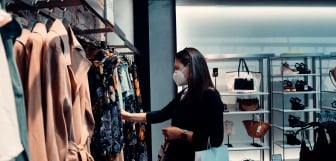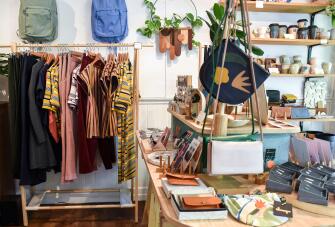Labor Day 2020: How Did Retail Businesses Fair?
Many people had questions as we headed into this year’s Labor Day Weekend. After a year of penny-pinching and staying at home, were Americans eager to get out of the house and spend money?
We compiled the latest consumer data following Labor Day to see how businesses fared during the holiday weekend.
Did Americans participate in Labor Day 2020?
Despite the pandemic, Americans made the most of the long weekend by all counts. The Transportation Security Agency processed more travelers during the holiday than at any other time since the first lockdowns began. Friday’s travel numbers were a 10x increase from the lowest levels of the pandemic.
Many of these travelers were not staying with family either. Hotels and other hospitality businesses saw a massive uptick in bookings. Orlando area hotels had higher occupancy rates than at any time during the pandemic, which makes sense considering Orlando theme parks hit capacity during the weekend.
By many accounts, travel might have been lower than in previous years, but people were definitely more active during this one holiday than any other since March 14th.
How did retail do during Labor Day weekend?
Labor Day is known for its massive sales. Shoppers look for everything from furniture to clothes, and stores didn’t hold back in their promotions this year.
Retail foot traffic returned to its March 1 levels in most states across the country. According to PCSU, a major credit union service organization, people used their debit and credit cards more this year than in 2019. Credit card usage rose by 9.9%, and debit cards saw a 23.6% spike. This data does not mean people spent more money than last year, but it can paint a picture of where people are allocating their funds during the pandemic.
Here is a breakdown of how industries performed during the week leading into Labor Day:
- Electronics: Consumers drastically increased their debit and credit spending on electronics. Credit card usage rose by 4.4% and debit increased by 3.4% compared to the last four weeks
- Clothing: Shoppers were mixed on buying new apparel. Debit card transactions came in 15.4% higher than this time last year, but credit card purchases still sat 6.7% lower than 2019
- Home Improvement and Discount Stores: Sales jumped incredibly, with debit purchases rising by 31% and credit increasing by 20.9% over their 4-week average
Did anything interesting happen during the weekend?
In a surprising turn, some businesses did not only treat this weekend as a way to boost revenue.
The meaning of Labor Day was not lost on Red Wing Shoes, which turned its stores into employment centers to give back to their community. The 525 temporary job centers specifically helped people find trade jobs. The company is known for making work boots and other safety footwork, and this jobs initiative was a wonderful way to give back to their blue-collar customers.
Looking Ahead: Businesses Need to Prepare for the Black Friday Rush
Labor Day did not disappoint, especially with the reduced economic output we’ve seen since March. The weekend crowds show that Americans are comfortable traveling and shopping, and there’s little reason to see why this trend will stop.
Black Friday is around the corner, and stores need to get ready for the holiday rush.
Cross of each of these items to get prepared:
- Identify high-demand items: Review your historic sales data to see which products sell best during Black Friday
- Revamp your floorplan: Make sure high-ticket items are easy to see and that your store can accommodate the crowds
- Send out email promotions: Get your customers excited about upcoming deals with email marketing
You can accomplish these three tasks and more with the Epos Now point of sale system. Our award-winning software streamlines retail operations so you can focus on your customers.
Learn more today by speaking with a POS consultant.




